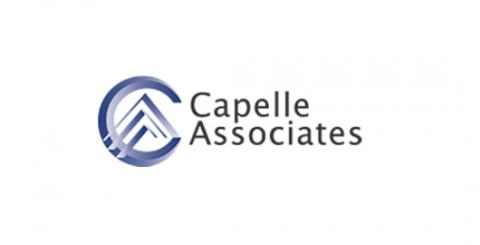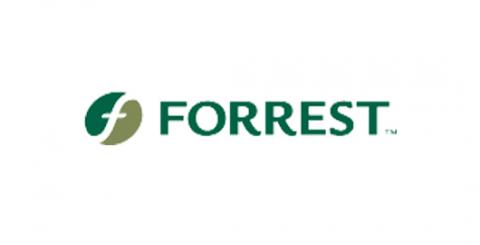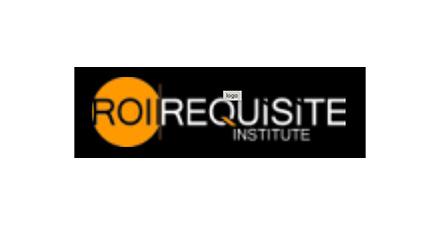 lobal Organization Design Society is pleased to host this authoritative and comprehensive Introduction and Bibliography on Jaques' work - now in its Fifth Edition.
lobal Organization Design Society is pleased to host this authoritative and comprehensive Introduction and Bibliography on Jaques' work - now in its Fifth Edition.
 |
by Ken Craddock
Senior Fellow of the Global Organization Design Society, and the society's Bibliographer, Research Advisory and Member of the Editorial Board formerly Columbia University City College of New York |
Download the PDFs
You must be a registered user and logged in to the site in order to download the Requisite Organization Annotated Bibliography.
The Global Organization Design Society is pleased to host this Introduction and Annotated Bibliography on Jaques' work - now in its Sixth Edition.
About the bibliography
"This Bibliography is in two parts because it grew too big. As you follow your own trail of research into this material you will begin to sense the dynamics that have been surrounding this theory, its power, and why it is resisted. I believe this theory is fundamental to the future of organization studies." - Ken Craddock
Part I
The first half of Part I is three Introductions: to requisite organization theory (including Elliott Jaques and Wilfred Brown, the founders of this theory), to the bibliography itself, and to the doctoral dissertations and theses on it. These essays provide a context for the articles, chapters and books in each section of Part II and shows why this theory is important and expansive. I have also tried to point out some of the features of its future development.
The second half of Part I consists of topic lists. Some of the works were published as part of a series, which are listed here. Others I have brought together to show their substance as a body of knowledge or to show their power, such as replication studies and teachable cases.
Note - This searchable Introduction PDF file is approximately 1.2 MB in size to download and is 260 pages in length.
Part II
This Sixth Edition of the Requisite Organization Annotated Bibliography gathers in one place more than 50 years of studies on requisite organization theory and application. The widest set of keywords have been used to scan the major search engines (and many minor ones). It includes over 2,900 research studies directly on the theory (including 134 PhDs and 162 professional articles) and over 2,200 related studies.
This collection will be a powerful aid to guide your research and your practice.
New findings include:
- • Its adaption countrywide by the seven Japanese keiretsu groups in 1969;
- • Its introduction to GE in the 1970s and its use in selecting its top managers and CEOs since then;
- • The transfer of the Japanese system to the U.S. and the U.K. (under Japanese management);
- • Its adoption by some 400 firms in the East and some 300 firms in the West;
- • Confirming research on high-performance work places and reformed personnel policies showing they cause higher profits; and
- • The Detroit “Big Three” do not use it.
Consultants can use the bibliography to...
- • Show potential clients the published research proof behind the verbal claims;
- • Show how these ideas have been applied and their practical results;
- • Provide professional business articles that potential clients will read;
- • Show the very wide range of successful applications across industries and functions;
- • Alleviate fears of adoption and show the negative impact of failure to adopt;
- • Guide their own actions and recommendations to clients.
Businesses can use the bibliography to...
- • Verify the personnel and structural concepts behind the theory;
- • Learn how to delegate responsibility, authority, expertise, and work so tasks get done;
- • Discover its practical links to other strategic initiatives such as total quality, six sigma, value engineering, stress reduction, and talent development;
- • Locate precedents within industry and within each function;
- • Discover the linkage between organizational architecture, discretion and productivity;
- • Reduce internal sexism, racism and ageism;
- • Increase CEO influence at the frontline where the firm interacts with the customer; and
- • Validate claims by CEOs who have adopted R.O. that it generates top-line growth of 30% and more a year.
Academics can use the bibliography to...
- • Validate the research on this human capability and organization theory;
- • Explain the Adult world of work, of continuous growth, of careers and development;
- • Explore multi-level research on leadership, cognitive capability, and accountability;
- • Get beyond the competitive business barrier to access and beyond superficial surveys;
- • Act as a resource to build on to explore and extend the theory;
- • Guide different and more accurate questions about people, organizations, and fit;
- • Explain stages of growth from childhood, to adolescence, to adulthood;
Note - This fully searchable Requisite Organization Annotated Bibliography PDF file is approximately 8.5 MB in size to download and is 2,219 pages in length (don't print).
This is the sixth edition of the Requisite Organization Annotated Bibliography. (Updated: March 2014)
(The fifth edition was revised in August 2009)
(The fourth edition was revised in March 2007.)
(The third edition was revised in May 2004)
Download the PDFs
You must be a registered user and logged in to the site in order to download the Requisite Organization Annotated Bibliography.
The researcher and author: Ken Craddock
 |
Kenneth Craddock
|
Ken Craddock is a consultant specializing in requisite organization and in quality. He has integrated the operational concepts of Elliott Jaques and W. Edwards Deming both vertically and horizontally. He provides support to managers for organizational transformation to increase effectiveness and improve strategy. He has been a member of the faculty at Empire State (SUNY) and at City College (CUNY) where he has taught strategy, microeconomics, management of public organizations, and requisite management skills.
Craddock completed this on-line annotated research bibliography on Requisite Organization after his M.A. in Business History at Columbia University. His thesis was Requisite Leadership: A Model of Organization Effectiveness, which described the development of this theory.
While at Columbia he initiated surveys which led to the first revision of the business school curriculum in 30 years, made proposals to improve morale, wrote cases and helped develop new courses. He has been a guest lecturer at the Columbia University Graduate School of Business on quality, strategy, and requisite organization design.
In the early 1990s Craddock was assistant to W. Edwards Deming, the man who first taught quality to the Japanese. He has consulted to firms of varying sizes, including a Fortune 100 firm. He has also worked as an analyst and management planner, as a consultant for metropolitan government, and supervised development of a PC-based tracking system to monitor services provided to clients. He developed the first MBO business plans for 16 offices.
He also holds an M.P.A. degree in Management from the Kennedy School at Harvard. He has published 8 articles and papers and made numerous conference presentations.
Please contact/e-mail Ken Craddock at [email protected] with your comments, suggestions, corrections, new material or encouragement in his ongoing work
.









